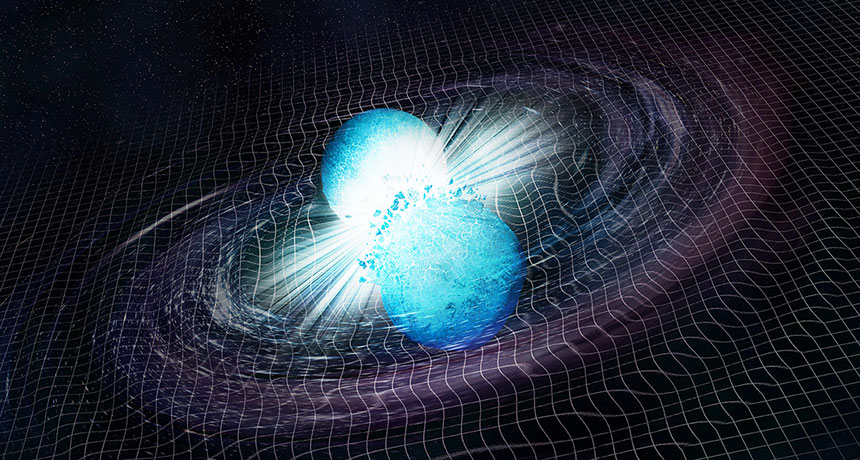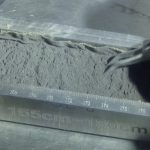A neutron star crash may have spawned a black hole

The first observed smashup of two stellar remnants known as neutron stars probably forged the least massive black hole yet discovered, researchers report in the June 1 Astrophysical Journal Letters.
This cosmic collision, observed in August 2017, took the astronomical community by storm and offered insights into the origins of precious metals and the mysterious dark energy that fuels the expansion of the universe (SN: 11/11/17, p. 6). Ever since, astronomers have wondered what became of the two neutron stars once they’d merged. This enigmatic amalgamation of dead stars — weighing about 2.7 times the mass of the sun — was suspected to be either a neutron star heftier than any yet discovered or the most lightweight black hole. The previous record-holder for lightest black hole was about four solar masses, says study coauthor David Pooley, a physicist at Trinity University in San Antonio.
Pooley and colleagues analyzed data collected by NASA’s Chandra X-ray space telescope several months after gravitational wave detectors first identified the neutron star collision. If the pair of neutron stars united to form an even more massive dead star, then researchers would expect that mega-neutron star to be surrounded by a bright shell of high-energy particles — similar to the Crab Nebula, but much brighter (SN Online: 6/13/08). X-rays coming from the site of the crash were far too faint to match this explanation, leading the team to conclude that the collision birthed a black hole instead.
Future observations of the collision remnant’s X-ray brightness could help confirm or deny the black hole’s existence, says study coauthor Pawan Kumar, an astrophysicist at the University of Texas at Austin.



